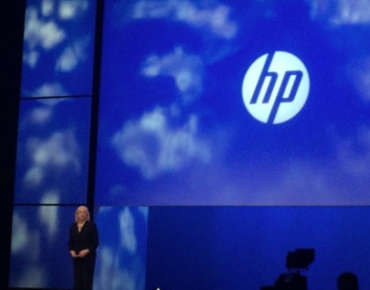HP Doubles Down On Infrastructure

Hewlett-Packard is "doubling down on infrastructure" as it splits itself in half, a process that should be completed by November 2015, CEO Meg Whitman told attendees of its Discover event in Barcelona, Spain.
Whitman sought to portray a proud Silicon Valley company that "has turned the corner" since 2011, when it was awash in $12 billion in debt. The company's current net cash position totals $5.9 billion, she said. The transformation of HP into a provider of "a new style of IT"– the revived company's new slogan – did not come without pain: 41,000 workers left the company in its last fiscal year ending October 31.
Citing the company's founding in David Packard's one-car garage in Palo Alto, Whitman said the split company would operate out of a "new two-car garage" consisting of HP Enterprise occupying one space and HP Inc. the other. Whitman will serve as CEO of the former and board chair at the latter.
The enterprise company will serve as the focal point for HP's infrastructure push centering on converged IT, servers, storage, software-defined networking, and a Helion cloud offering built on OpenStack.
While the emphasis of Whitman pep talk was the management of soaring volumes of data, the company is also attempting to bring new computing technologies to market. For example, HP has been a pioneer in commercializing memristors, the fourth fundamental chip component after capacitors, inductors, and resistors. It wants to fold the building block technology into processors at the heart of a computing project HP refers to simply as "The Machine."
Memristor-based memory components could be ready by 2016, and a full-up computer using them should come by the end of the decade.
"We're attacking the exascale with the nanoscale," Whitman stressed, adding that HP is "turning up the volume on R&D" with a 10 percent year-on-year increase in research spending during fiscal 2015.
As HP Enterprise gears up over the next year, Whitman repeatedly stressed that "infrastructure matters more than ever" and "your apps are only as good as your infrastructure." Hence, the IT vendor will highlight over the coming year its ability to optimize existing datacenters while delivering a bulletproof cloud architecture that scales to handle bigger workloads.
Among the examples cited by Whitman was Intel's adoption of HP Apollo servers to boost workloads associated with chip layout software known as electronic design automation. She said Intel scaled up its EDA workloads by 50 percent. (EnterpriseTech revealed the inside of Intel's 610,000 core chip design operations a year ago and also covered the Apollo 6000 machines that Intel has acquired from HP when they were launched back in June.)
Along with the usual forecasts of data complexity and data volumes skyrocketing by a factor of 50 by 2020, Whitman also stressed data security as a growing market for HP Enterprise.
"Cybersecurity is a threat to the global economy, not just an IT threat," she noted. "We want to turn data from a cost center and a possible liability into an asset."
Security also plays into HP's cloud strategy. Whitman noted that some customers would shift data and workloads to the public cloud while keeping critical applications on-premise as a way to ensure security. "What you really need is a hybrid cloud" that delivers cost savings while ensuring data security, she asserted.
Hence, Whitman emphasized, HP is doubling down in 2015 on its IT infrastructure bet.
Related
George Leopold has written about science and technology for more than 30 years, focusing on electronics and aerospace technology. He previously served as executive editor of Electronic Engineering Times. Leopold is the author of "Calculated Risk: The Supersonic Life and Times of Gus Grissom" (Purdue University Press, 2016).










